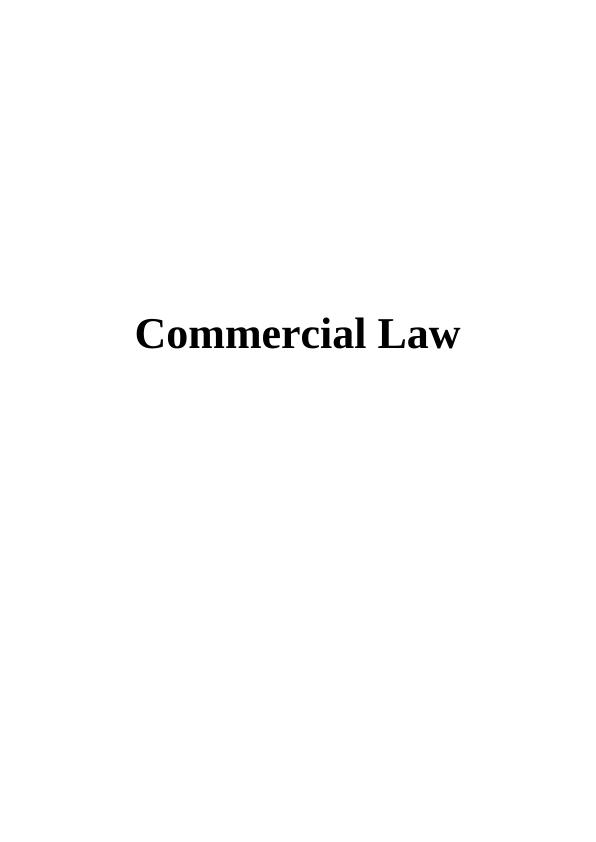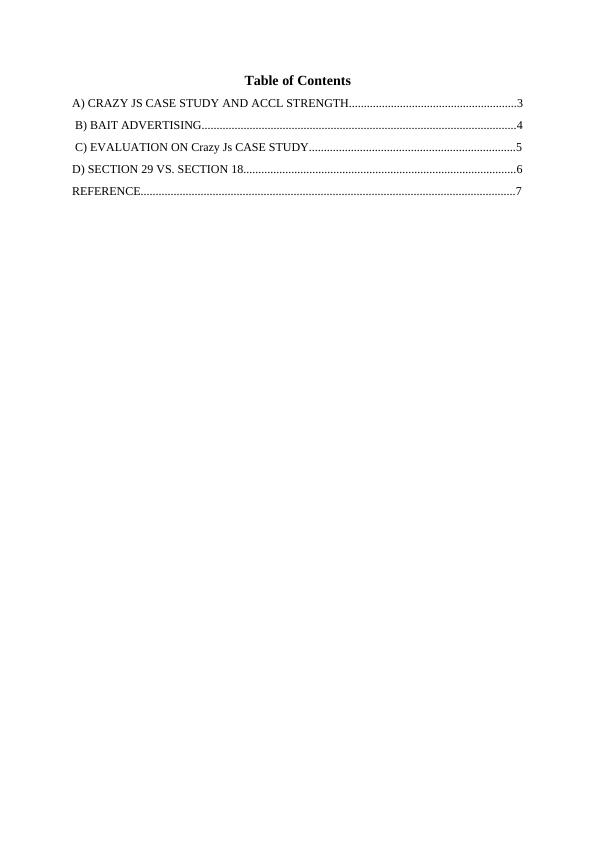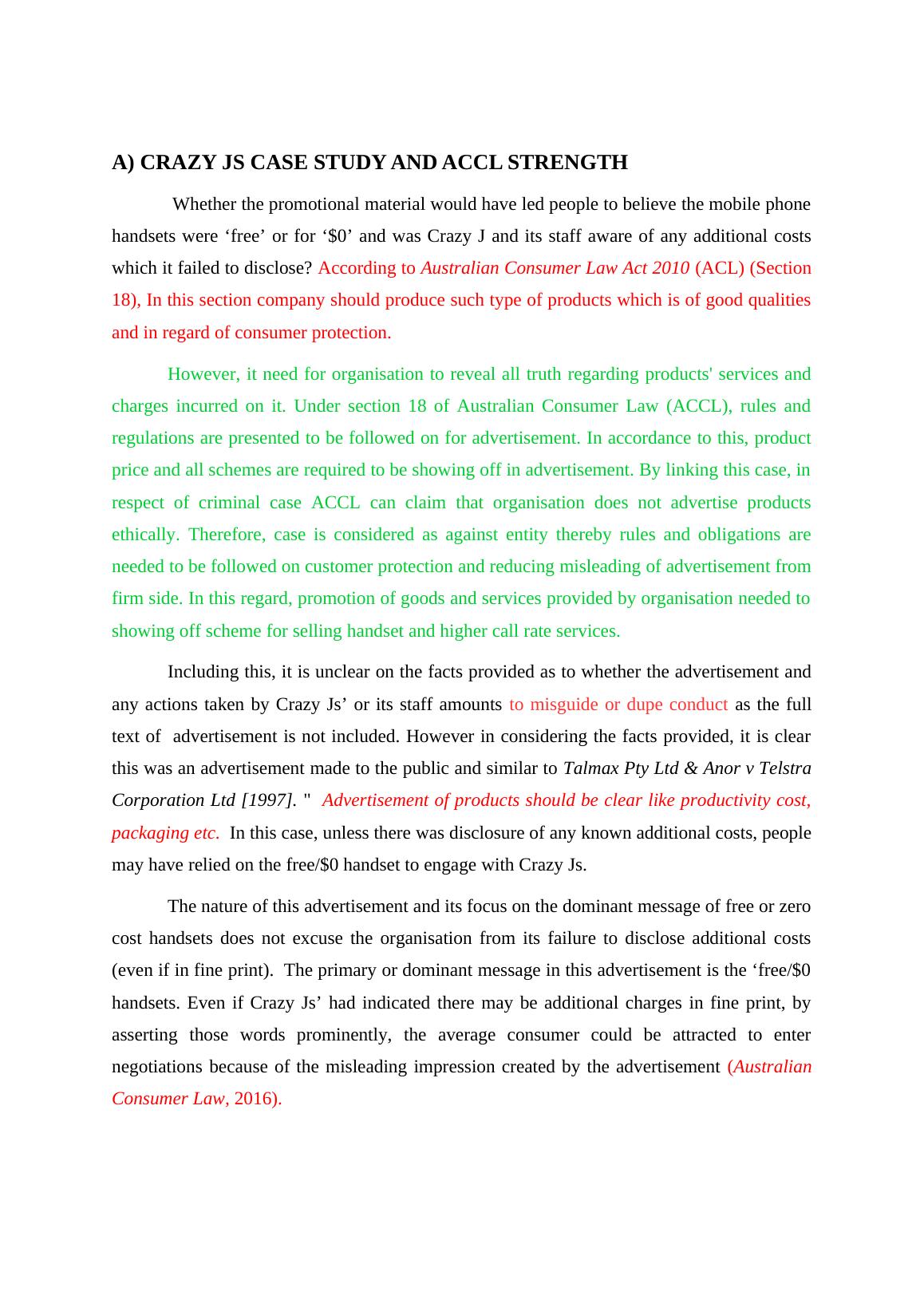Case Study on Commercial Law (Doc)
7 Pages1867 Words139 Views
Added on 2020-01-23
Case Study on Commercial Law (Doc)
Added on 2020-01-23
ShareRelated Documents
End of preview
Want to access all the pages? Upload your documents or become a member.
Assessing Legal Compliance of Advertisements: TPG Case Study
|7
|1639
|312
Legal Issues in Misleading Conduct: A Case Study of Rollinstone
|6
|1250
|340
Misleading and Deceptive Conduct in Business Laws
|13
|2462
|451
Fundamentals of Law Assignment
|6
|1268
|46
BUS101 | Introduction to Business Law - Assignment
|4
|439
|215
ACCC v TPG Case Study Analysis - Assignment
|3
|485
|269



